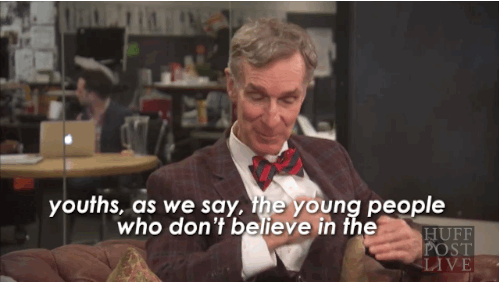Microsoft Creates Emotion Recognition Tool. Upload Your Image And Give It A Try

Microsoft Creates Emotion Recognition Tool. Upload Your Image and Give It a Try
Project Oxford is Microsoft’s collection of machine-learning application programming interfaces (APIs). Now the tech giant can add emotion recognition to its API portfolio.
Note: This one was also a little off. I tried to give it an easy one (surprise). But apparently, Project Oxford thinks that I am judgy and filled with scorn.
Read more at: http://futurism.com/links/microsoft-creates-emotion-recognition-tool-upload-your-image-and-give-it-a-try/
More Posts from Curiositytherover and Others
What’s Up for September 2016

We won’t have a solar eclipse until Aug. 21, 2017, but observers in central Africa will see an annular eclipse, where the moon covers most but not all of the sun, on Sept. 1. Observers always need to use safe solar eclipse glasses or filters on telescopes, binoculars and cameras.

Also this month, there are two minor meteor showers, both with about 5 swift and bright meteors per hour at their peak, which will be near dawn. The first is the Aurigid shower on Sept. 1. The new moon on the first means the sky will be nice and dark for the Aurigids.

The second shower is the Epsilon Perseids on Sept. 9. The first quarter moon sets on the 9th at midnight, just in time for the best viewing of the Perseids.

There are many nice pair-ups between the moon and planets this month. You can see the moon between Venus and Jupiter on Sept. 2, and above Venus on the 3rd, right after sunset low on the West-Southwest horizon. On the 15th the nearly full moon pairs up with Neptune, two weeks after its opposition, when the 8th planet is closest to Earth in its orbit around the sun.
Watch the full September “What’s Up” video for more:
Make sure to follow us on Tumblr for your regular dose of space: http://nasa.tumblr.com.


There’s finally a Tesla that’s priced like a normal car
Follow @the-future-now










Bill Nye Explains The Connection Between Climate Change And Terrorism In Paris
President Obama made headlines Monday when he said during his remarks at COP21 that the climate change conference taking place in Paris is an “act of defiance” against terrorists who attacked the city earlier this month. Later on the same day, Bill Nye took that link a step further, explaining to HuffPost Live that the brutality in Paris was “a result of climate change.”
“This is just the start of things.”
Jeff Williams: Record Breaker
Astronaut becomes U.S. record holder for most cumulative time in space!
The Olympics are over, but Americans are STILL breaking records. NASA astronaut Jeff Williams just broke Scott Kelly’s record of 520 cumulative days spent in space. When Williams returns to Earth on Sept. 5, he will have racked up 534 days in space. To celebrate this amazing achievement, here are some of the best images taken during his four spaceflights.

STS-101 Atlantis:
During May 2000, Williams made his first spacewalk during space shuttle Atlantis’ STS-101 mission. On this 10-day mission, Williams’ first spacewalk lasted nearly seven hours. He is pictured here outside the space station.

Expedition 13:
Williams experienced his first long-duration mission in 2006, when he served as flight engineer for Expedition 13 space station mission. During his time in orbit, he performed two spacewalks, saw the arrival of two space shuttle missions and resumed construction of the orbiting laboratory during his six-month tour. While on one of those spacewalks, Williams took this selfie.

Expedition 21/22:
Williams returned to space for another six-month mission in 2009 as a flight engineer on Expedition 21 and commander of Expedition 22. During that time, he hosted the crews of two space shuttle missions. The U.S.-built Tranquility module and cupola were installed on station. Here is an image of the then newly installed cupola.

Expedition 47/48:
This time around, Williams has been onboard the space station since March 2016, where he served as flight engineer for Expedition 47 and now commands Expedition 48. With over 7,000 retweets on Williams’ photo of an aurora from space, his Twitter followers were clearly impressed with his photography skills.
Make sure to follow us on Tumblr for your regular dose of space: http://nasa.tumblr.com

Space exploration is pretty amazing right now. Just yesterday, we launched the ExoMars 2016 spacecraft, which will hunt for signs of life on Mars, and by now, the Voyager 1 spacecraft is likely way out in interstellar space. NASA recently announced that it plans to visit Europa, one of the most promising candidates in our Solar System to host life, and even NASA’s chief scientist thinks we’ll find alien life within 20 to 30 years, as long as we keep exploring.
But how do you keep track of all these awesome space missions? To help out,the guys at Pop Chart Lab have created this beautiful poster showing our space exploration to date. It spans all the way from 1959 to 2015, and features over 100 exploratory probes, landers, and rovers.
As you can see on the poster below, the majority of our machines never leave Earth’s orbit. There are a whole lot of crowded lines near our planet, each of which belongs to a space probe or explorer of some kind. But as you get further from Earth, there are less and less of these brave explorers, and you get to see just how far humanity has travelled into our Solar System.

What’s in a Name? Gaming Names Reveal Lots About the Player’s Personality
What’s in a name? In the case of the usernames of video gamers, a remarkable amount of information about their real world personalities, according to research by psychologists at the University of York.
The research is in Computers in Human Behavior. (full open access)

NASA is about to light the biggest human-made space fire ever
If a fire breaks out inside the cabin of a small spacecraft, there’s nowhere to run. But in order to figure out how large fires really behave in space, NASA is planning to light one on purpose. How they’re planning to conduct the test.
Follow @the-future-now

Injecting Gases Into The Stratosphere Could Reduce Hurricanes
In an attempt to combat climate change, a multinational team of scientists are studying how shading sulfate aerosols that are dispersed into the stratosphere could help cool the planet and reduce the number of hurricane occurrences. “We’re basically mimicking a volcano and saying we’re going to put 5 billion tons of sulfates a year into the atmosphere 20 kilometers high, and we’ll do that for 50 years,” says John Moore, head of China’s geoengineering research program
Read more at: Injecting Gases Into The Stratosphere Could Reduce Hurricanes
NASA gives MIT a humanoid robot to develop software for future space missions

NASA Astronomy Picture of the Day 2016 September 4
Io over Jupiter from Voyager 1
Back in 1979, NASA’s Voyager 1 spacecraft flew past Jupiter and its moons. The images in this mosaic, featuring the moon Io against a background of gas giant Jupiter’s diffuse swirling cloud bands, were recorded by Voyager’s camera from a distance of about 8.3 million kilometers. The Io image from this mosaic may be the first to show curious round features on Io’s surface with dark centers and bright rims more than 60 kilometers across. Now known to be volcanic in origin, these features were then thought likely to be impact craters, commonly seen on rocky bodies throughout the Solar System. But as Voyager continued to approach Io, close-up pictures revealed a bizarre world devoid of impact craters, frequently resurfaced by volcanic activity. Earlier this year a new robotic spacecraft, NASA’s Juno, began to orbit Jupiter and last week made a pass within 5,000 kilometers of Jupiter’s clouds. During the next two years, it is hoped that Juno will discover new things about Jupiter, for example what’s in Jupiter’s core.
-
 wprianne liked this · 9 years ago
wprianne liked this · 9 years ago -
 jymagnie reblogged this · 9 years ago
jymagnie reblogged this · 9 years ago -
 tby01 liked this · 9 years ago
tby01 liked this · 9 years ago -
 futur3lust reblogged this · 9 years ago
futur3lust reblogged this · 9 years ago -
 wrathfuldragon liked this · 9 years ago
wrathfuldragon liked this · 9 years ago -
 four-fucks-sake reblogged this · 9 years ago
four-fucks-sake reblogged this · 9 years ago -
 monadique liked this · 9 years ago
monadique liked this · 9 years ago -
 persianflaw liked this · 9 years ago
persianflaw liked this · 9 years ago -
 altotrain liked this · 9 years ago
altotrain liked this · 9 years ago -
 profmccue reblogged this · 9 years ago
profmccue reblogged this · 9 years ago -
 deaaaaaaaaaaaaad-blog reblogged this · 9 years ago
deaaaaaaaaaaaaad-blog reblogged this · 9 years ago -
 hoekitchen-blog liked this · 9 years ago
hoekitchen-blog liked this · 9 years ago -
 insanity-jane liked this · 9 years ago
insanity-jane liked this · 9 years ago -
 tinsnip reblogged this · 9 years ago
tinsnip reblogged this · 9 years ago -
 lament-of-ajna liked this · 9 years ago
lament-of-ajna liked this · 9 years ago -
 malhreux reblogged this · 9 years ago
malhreux reblogged this · 9 years ago -
 quirkybiochemist liked this · 9 years ago
quirkybiochemist liked this · 9 years ago -
 bichemicalbromance reblogged this · 9 years ago
bichemicalbromance reblogged this · 9 years ago -
 wealtschmerz reblogged this · 9 years ago
wealtschmerz reblogged this · 9 years ago -
 bboyshortkid liked this · 9 years ago
bboyshortkid liked this · 9 years ago -
 thecraftychemist reblogged this · 9 years ago
thecraftychemist reblogged this · 9 years ago -
 itbeamonster reblogged this · 9 years ago
itbeamonster reblogged this · 9 years ago -
 jenuinearticle liked this · 9 years ago
jenuinearticle liked this · 9 years ago -
 futur3lust liked this · 9 years ago
futur3lust liked this · 9 years ago -
 danimoxie liked this · 9 years ago
danimoxie liked this · 9 years ago -
 frickfrack5sos liked this · 9 years ago
frickfrack5sos liked this · 9 years ago -
 read-receipt liked this · 9 years ago
read-receipt liked this · 9 years ago -
 jetiaime liked this · 9 years ago
jetiaime liked this · 9 years ago -
 153armstrong liked this · 9 years ago
153armstrong liked this · 9 years ago -
 pajayoro liked this · 9 years ago
pajayoro liked this · 9 years ago -
 crashlandia liked this · 9 years ago
crashlandia liked this · 9 years ago -
 voidforests liked this · 9 years ago
voidforests liked this · 9 years ago -
 curiositytherover reblogged this · 9 years ago
curiositytherover reblogged this · 9 years ago -
 twistedlandstourguide liked this · 9 years ago
twistedlandstourguide liked this · 9 years ago